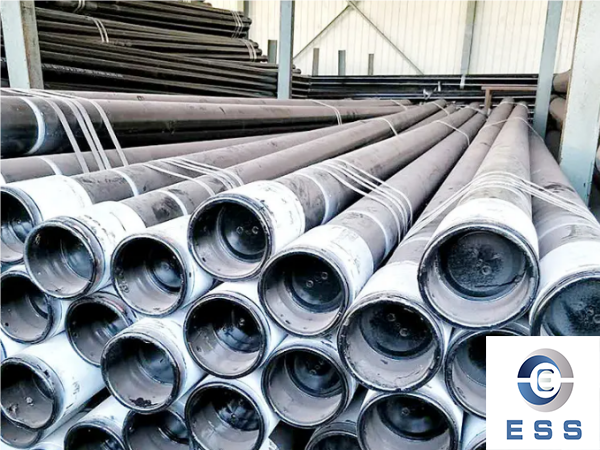Pipe Coatings and Their Role in OCTG Casing Preservation
Introduction
In the oil and gas industry, pipe coatings play a crucial role in the preservation and integrity of Oil Country Tubular Goods (OCTG) casing. OCTG is a collective term that encompasses a wide range of seamless and welded pipes used in drilling and production operations. The harsh environments and corrosive nature of oil and gas operations pose significant challenges to the durability and longevity of these casings. This article explores the importance of pipe coatings in preserving OCTG casing and the various types of coatings used in the industry.

1.Understanding OCTG Casing
OCTG casing is primarily used for drilling wells and is subjected to demanding conditions such as high pressures, corrosive fluids, and extreme temperatures. Casing failure can lead to catastrophic consequences, including production delays, environmental damage, and costly repairs. To mitigate these risks, the industry relies on various protective measures, with pipe coatings playing a vital role.
2.The Role of Pipe Coatings in OCTG Casing Preservation
Pipe coatings act as a barrier between the corrosive environment and the metal surface of the casing, preventing corrosion and extending the life of the casing. The coatings provide protection against chemical attack, abrasion, and mechanical damage, as well as improve the hydraulic efficiency of the casing. Coatings also enhance the casing's resistance to external factors, including moisture, soil stresses, and microbiologically influenced corrosion (MIC).
3.Types of Pipe Coatings
3.1. Fusion-Bonded Epoxy (FBE) Coatings
FBE coatings are widely used in the industry due to their excellent adhesion, impact resistance, and resistance to cathodic disbondment. The process involves heating the pipe surface and applying an epoxy powder that melts and fuses to form a protective layer. FBE coatings provide excellent protection against corrosion caused by water, soil, and other corrosive agents.
3.2. Thermoplastic Coatings
Thermoplastic coatings, such as polyethylene (PE) and polypropylene (PP), are frequently used for their resistance to chemicals, impact, and abrasion. These coatings are applied using various techniques, including extrusion, injection molding, and powder coating. Thermoplastic coatings offer high-temperature resistance and can be tailored to meet specific environmental and operational requirements.
3.3. Three-Layer Polyethylene (3LPE) and Three-Layer Polypropylene (3LPP) Coatings
3LPE and 3LPP coatings combine the protective properties of FBE with the mechanical strength and chemical resistance of thermoplastics. These coatings consist of a fusion-bonded epoxy layer, followed by an adhesive layer and a topcoat of polyethylene or polypropylene. 3LPE and 3LPP coatings are widely used in offshore and onshore applications due to their excellent performance against corrosion, abrasion, and mechanical damage.
3.4. Cementitious Coatings
Cementitious coatings, such as liquid-applied coatings and cement-mortar linings, are commonly used in OCTG casing for their ability to withstand high temperatures and pressures. These coatings provide excellent protection against corrosion, particularly in wells where high acid or sour gas content is present. Cementitious coatings offer good adhesion, impact resistance, and resistance to chemical attack.
4.Quality Assurance and Testing
Ensuring the effectiveness of pipe coatings requires rigorous quality assurance and testing procedures. Coatings should adhere properly to the casing surface, have uniform thickness, and exhibit good adhesion and coverage. Common tests include visual inspection, adhesion tests, holiday detection, impact resistance tests, and cathodic disbondment tests. These tests help identify any defects, discontinuities, or vulnerabilities in the coating system, allowing for timely remedial actions.
5.Advances in Pipe Coating Technology
The oil and gas industry continually strives to improve pipe coating technology to enhance casing preservation and overall operational efficiency. Recent advancements include the development of nanocomposite coatings, smart coatings with self-healing properties, and eco-friendly coatings that reduce environmental impact. These innovations aim to further enhance corrosion protection, extend coating life, and reduce maintenance costs.
Conclusion
Pipe coatings are essential for preserving OCTG casing in the challenging and corrosive environments of the oil and gas industry. They provide a protective barrier against corrosion, abrasion, and other forms of damage, significantly extending the life of the casing. With advancements in coating technology and stringent quality assurance measures, the industry continues to improve the effectiveness and durability of pipe coatings, ensuring the integrity and reliability of oil and gas operations.
Read more: What is OCTG Casing? or What are the grades of OCTG casing?













 Eastern Steel Manufacturing Co.,Ltd not only improve product production and sales services, but also provide additional value-added services. As long as you need, we can complete your specific needs together.
Eastern Steel Manufacturing Co.,Ltd not only improve product production and sales services, but also provide additional value-added services. As long as you need, we can complete your specific needs together.










